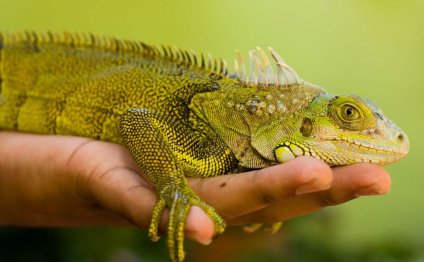
Easy Reptiles to keep
 By Paul Demas
By Paul Demas
Turtles are fascinating to watch, and many have attractive colors and markings, and interesting personalities. They can make great interactive pets. They are known for recognizing their owners and endlessly begging for food. It’s all part of their charm.
However, a lot of work is involved in keeping a turtle. They are not like dogs and cats. Turtles don’t enjoy being handled. They can easily live up to 20 or 30 years, and providing them with the proper enclosure as they grow can be a larger investment than you initially expected. By purchasing a turtle, you are making a commitment to their care — and doing so for the long haul.
Turtle Necessities
As far as housing goes, bigger is better. Many aquatic turtles are active swimmers, so choose the largest size enclosure possible. Glass aquaria are a popular choice. A 30-gallon tank is the absolute minimum size for smaller species measuring between 4 and 6 inches. For turtles between 6 and 8 inches, a 55-gallon tank is appropriate. And for turtles measuring more than 8 inches, tanks in the 75- to 125-gallon range are a better choice. If you start with a younger, smaller turtle, a smaller tank is acceptable as long as the enclosure size increases as your turtle grows.
Photo by J. Malik/Wikipedia
Painted turtles make an excellent choice for novice turtlekeepers.
Other turtle housing choices include plastic tubs available at most home or hardware stores. Some tubs with both a water and land area are even designed specifically for turtles. If you have the room, another great option is an indoor or outdoor pond.
 One secret to successful turtlekeeping is clean water. A good filtration system goes a long way in accomplishing this. Two excellent choices for turtle tanks are an internal aquarium filter or a canister filter. Whichever you choose, make sure you regularly maintain the filter. Turtles are really messy.
One secret to successful turtlekeeping is clean water. A good filtration system goes a long way in accomplishing this. Two excellent choices for turtle tanks are an internal aquarium filter or a canister filter. Whichever you choose, make sure you regularly maintain the filter. Turtles are really messy.
Keep tank decorations to a minimum. Most turtles destroy any attempts at aquascaping. Substrate in a turtle tank only accumulates uneaten food and waste, which quickly fouls the water, yet some turtle species, such as soft-shell turtles, which need a soft sand bottom, require it. However, for most turtles I don’t use any substrate or gravel, making cleaning much easier. On the other hand, if a bare-looking tank is not aesthetically appealing to you, feel free to decorate it, but be prepared for more difficult and more frequent cleaning.
One piece of décor is essential to most turtle habitats: a basking spot. This can be a carefully placed rock, a piece of driftwood or one of the ready-made basking platforms available at local pet stores. I highly recommend above-tank basking platforms for most aquatic turtles. Whatever type of basking spot you pick, select one large enough to allow the turtle to climb out of the water completely, and place it securely under the basking light.
Turtle Lighting Requirements
An important aspect of turtle care often neglected or misunderstood is lighting. Turtles reap two primary benefits from light: ultraviolet light and heat.
Two types of ultraviolet light, UVA and UVB, are essential for your turtle’s health. UVA light seems to encourage natural behavior such as feeding and reproduction. Turtles require UVB for the synthesis of vitamin D3, which in turn allows calcium absorption and metabolism. Correct UVB exposure is also necessary for a turtle’s growth. Without it, there is potential for serious health issues such as poor shell growth, secondary hyperparathyroidism and a shorter life span.
Turtles also get heat from light. Like all reptiles, turtles are ectotherms, so they need different temperature zones to regulate body temperature. A good general rule is to maintain a basking spot within the range of 85 to 95 degrees Fahrenheit. The water temperature should average about 10 to 15 degrees lower than the basking spot, and you can attain it with a submersible aquarium heater.
Many styles of bulbs and light systems are available. Whichever you choose, make sure it takes care of your turtle’s UV and heat requirements. Not all turtles have the same needs, so research the specific needs of any turtles you wish to keep.
RELATED VIDEO



Share this Post
Related posts
Colorful lizard
A very large species of chameleon that is endemic to forests in eastern and northern Madagascar. They reach up to 68 cm (27…
Read MoreBest Reptiles to have as pets
Large lizards make excellent pets for experienced keepers. Creatas/Creatas/Getty Images The largest lizards in the world…
Read More A zoonosis ( /ˌzoʊ.əˈnoʊsɨs/) or zoonose is any infectious disease that can be transmitted between species (in some instances, by a vector) from animals to humans or from humans to animals (the latter is sometimes called reverse zoonosis or anthroponosis). In a...
A zoonosis ( /ˌzoʊ.əˈnoʊsɨs/) or zoonose is any infectious disease that can be transmitted between species (in some instances, by a vector) from animals to humans or from humans to animals (the latter is sometimes called reverse zoonosis or anthroponosis). In a...












